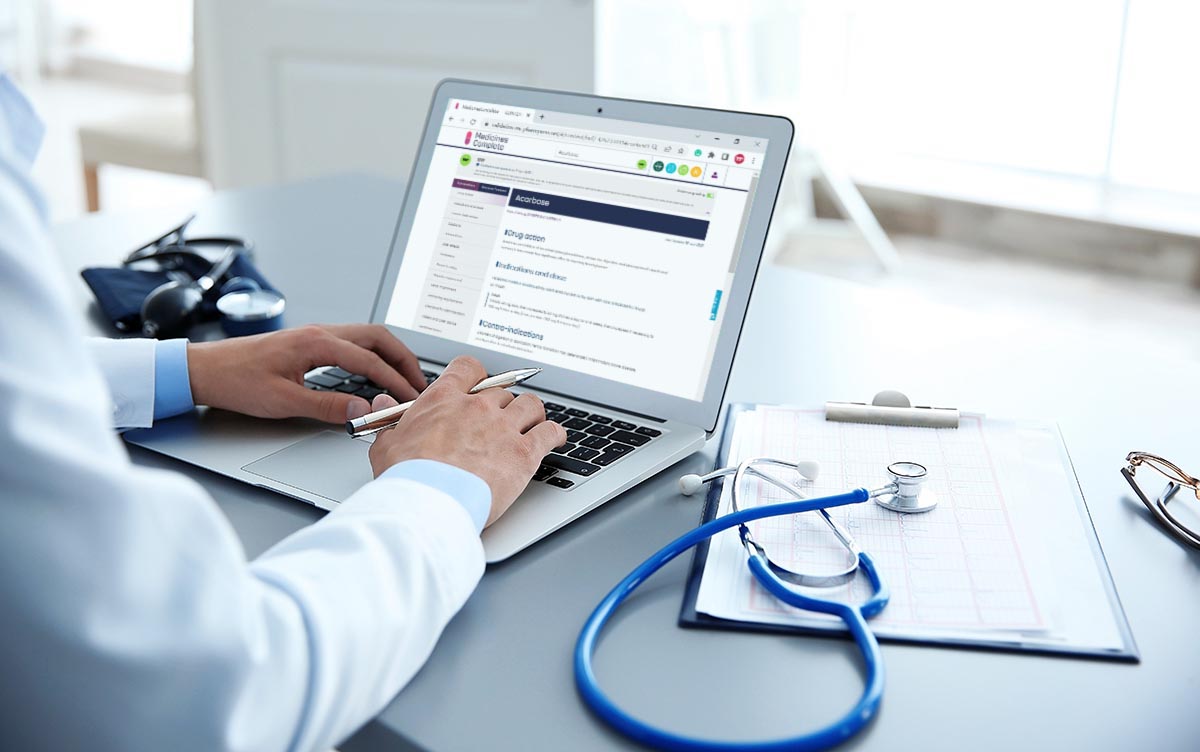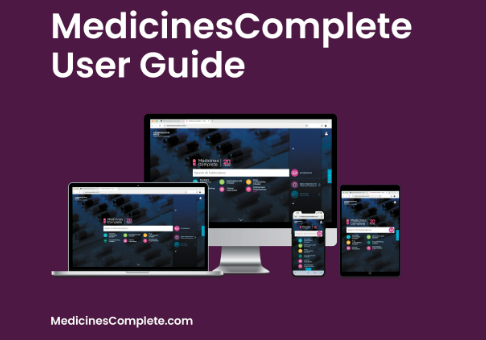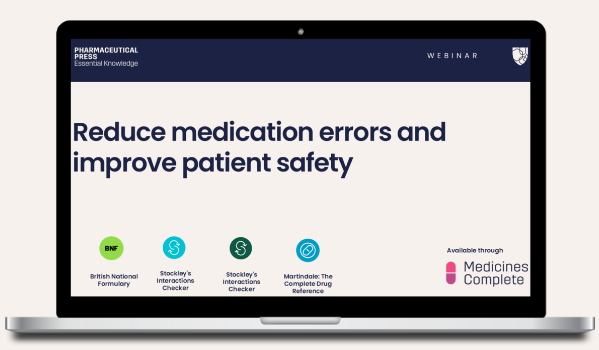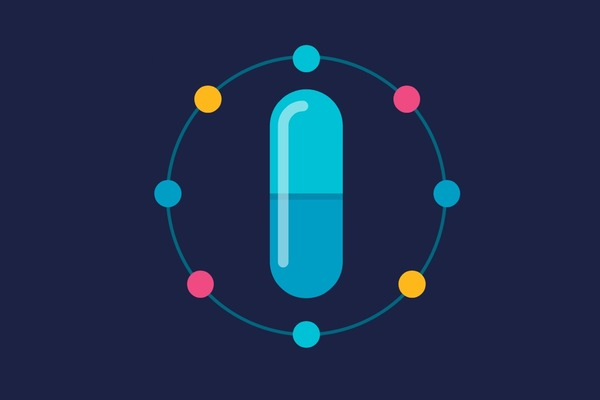What is an excipient?The word excipient is used to describe any component of a medicine that isn’t the active ingredient.
The word excipient is used to describe any component of a medicine that isn’t the active ingredient.
Most active ingredients cannot be administered alone because they have unsuitable physical and chemical properties. For example, they may have an unpleasant taste which would lead to poor patient acceptability, or perhaps they do not easily dissolve in gastric fluids resulting in poor bioavailability.
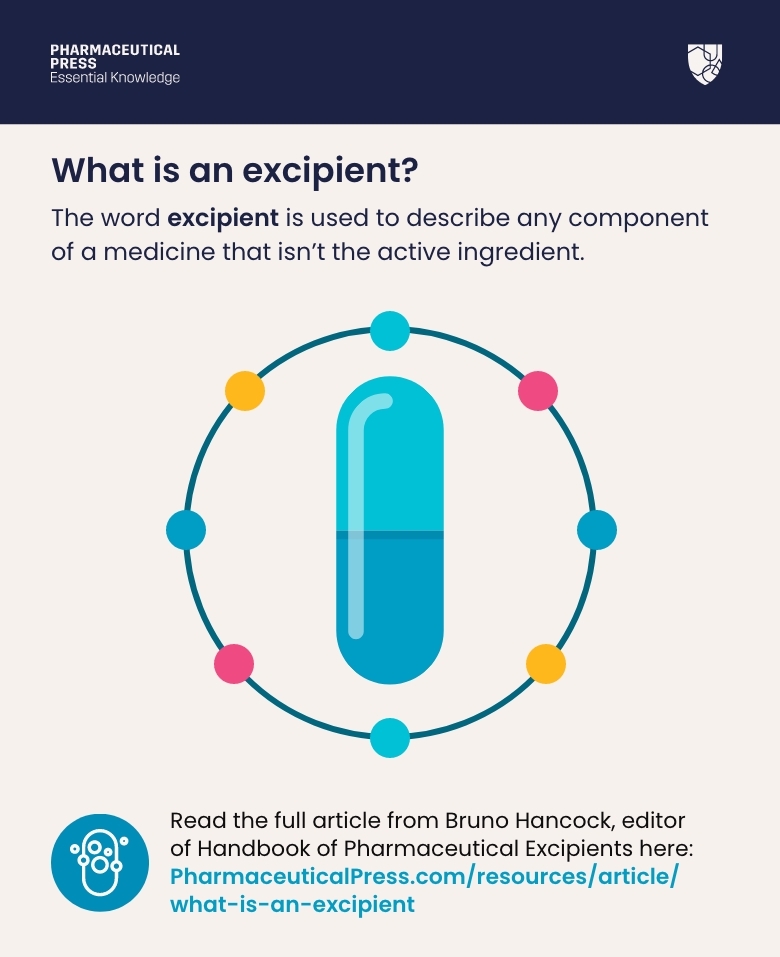
This is where excipients come in. They are mixed with the active ingredient to create a convenient, effective, and stable dosage form (like a tablet, or capsule), which allows the patient to more easily take their medicine.
Aside from enhancing the patient experience (such as with flavourings), or improving the bioavailability (with solubility and dissolution aids), excipients are also used to enhance the product shelf life (like a preservative), or to aid the manufacturing of the medicine (such as with a tableting lubricant).
Without excipients it would be impossible to deliver many active components, so they are critical components of most of the medicines that we take today.
It is very important that we fully understand the properties of excipients and that they don’t cause any undesired ‘side effects’ in the patient. They also need to compliment the properties of the active ingredient and not take way from the therapeutic effect that is desired.
As with any other scientific field of study, there is ongoing long-term research to find better excipients and new ways to use them. This emerging research is closely monitored by Pharmaceutical Excipients’ editorial team and added once consensus on the new uses and properties emerges.
Pharmaceutical Excipients is essential for those involved in the development, production, control, or regulation of pharmaceutical preparations, and features practical chapters on formulation considerations.
An example of this is the development of ‘co-processed excipients’ – combining two or more excipients into a new composite material that has different, novel functionality – such as improving the speed and efficiency of tablet and capsule manufacturing.
Another good example is the use of amino acids for improving the oral delivery of low solubility active ingredients. Drug discovery methods are increasingly identifying poorly soluble active ingredients, so new approaches to solubility are important to reflect in Pharmaceutical Excipients records.
How are pharmaceutical excipients chosen?
Excipients are carefully chosen to provide the desired properties of the medicine to the patient and their carers. This includes, for example, ease of swallowing for an oral dosage form, or helping with identification for tablets and capsules.
The most important considerations in selecting excipients include:
- Functionality: Excipients are chosen based on their intended function in the formulation, such as binders, disintegrants, lubricants, preservatives, etc. Each excipient serves a specific purpose to ensure the drug’s stability, bioavailability, and manufacturability.
- Compatibility: Excipients must be compatible with the active ingredient and other excipients in the formulation. They should not react chemically or physically with the drug or alter its stability or efficacy.
- Safety: Excipients must be safe for human consumption at the intended dose and route of administration. They should be non-toxic, non-irritating, and not cause allergic reactions or other adverse effects.
- Regulatory considerations: Excipients must comply with regulatory standards and guidelines set by health authorities such as the Food and Drug Administration (in the United States), European Medicines Agency (in Europe), or other national regulatory agencies. These regulations ensure that excipients are of suitable quality and purity.
- Manufacturing feasibility: Excipients should be readily available and cost-effective. They should also be compatible with the manufacturing processes involved in producing the drug formulation.
- Physical and chemical properties: Excipients should possess the required physical and chemical properties to achieve the desired formulation characteristics (e.g., powder flowability or compressibility for making a tablet that doesn’t crumble).
- Sustainability: Excipients should be produced in a sustainable manner and not persist in the environment after dosing to the patient.
- Patient acceptability: Excipients should help to enhance the taste, appearance, or ease of administration of the drug product. Factors like colour, taste, and texture can influence patient compliance.
What are the most common types of excipients?
Three of the most widely used excipients globally are:
- microcrystalline cellulose
- lactose
- magnesium stearate.
Microcrystalline cellulose is primarily produced from wood pulp. It is purified and isolated as a tasteless white powder that easily compresses into tablets. It is sustainably produced, relatively inert, and inexpensive.
Lactose is a naturally occurring sugar that is obtained from milk, and it is also easily compressed into tablets or filled into hard-shell capsules. It is flavourless and odourless, available globally, and accepted for use in medicines by all the global regulatory agencies.
Magnesium stearate is used as a lubricant for tablet compression and capsule filling. It is usually isolated from plant materials and has been shown to be safe and well tolerated by the majority of patients.
About the author
Bruno Hancock has been a contributor to Handbook of Pharmaceutical Excipients for more than 30 years, and an editor since 2017. He is a pharmacist by training and has worked on the design, development, and commercialisation of new medicines for his entire professional career.


